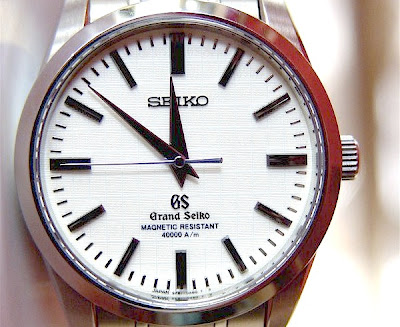As I've been writing for elementary math students for the past decade, I tend to think about concepts introduced in math class. Telling time is one of those. As Head of Curating Cazalea, of course I own most of these watches. Or I did once. Even if I don't admit it to my wife.
TELLING TIME WITH ARABIC NUMERALS & HANDS
We have adopted the general term "analog" to describe the stereotypical round clock or watch with 2 or 3 hands that revolve around a central arbor. The hands point at numerals. Let's look at the possible variations for clocks and watches with hands pointing to Arabic numerals:
Here's a favorite watch I formerly owned. This has 12 very distinct Arabic numerals, a short wide hour hand, a longer, narrower minute hand, and a delicate second hand. In addition, the minute track is clearly indicated and the minute hand and second hands reach right into it, so you need not guess at the minutes or seconds.
This Eterna KonTiki also is clear and easy to read, even though it only has the even numbers. The odd numbers are implied by raised index markers (indices). The minute and hour hands are obviously different lengths and easy to tell apart. They have fine tips to point directly at a target. The second hand has a bright red tip. The minute and second track is clearly marked. This watch adds a date indication window at the 3 o'clock position.
Now you can see I've chosen a watch made specifically for kids. It's a clean and simple black dial, with very clear, contrasting orange numerals. It has no markers, minute track, logos or distractions.
Now you can see I've chosen a watch made specifically for kids. It's a clean and simple black dial, with very clear, contrasting orange numerals. It has no markers, minute track, logos or distractions.
This fancy Ulysse Nardin watch is the exact opposite of the previous sample. It uses very elaborate Art Deco Arabic numerals. The company logo is at the 3 o'clock position, the date window and a small seconds display are at 6 o'clock, and a power reserve indicator is below the 12. The four hands are blued (a heat treatment applied to the metal) so they stand out from the dial and are easier to see. The power reserve indicator simply shows you if the watch is fully wound or about to run down. [I never owned this watch]
This Grand Seiko watch is a simpler 3-hand timepiece, with no numerals at all. The second, minute and hour hands are obviously of different length and width, so we can easily tell them apart. They do not end right at their axis, but have a tail that extends beyond the point about which they rotate. The indices are similar to one another, but thicker (wider) on the 3, 6, 9 and 12.
Finally, the Movado "Museum" watch is about as simple as a watch with hands can be. It has a spot at 12 to indicate the top, a faint logo at the bottom, and nothing else on the dial. So we have a hard time telling the exact minutes, and can't see seconds at all. But at a glance, we can see hours and minutes. [Never owned this one either]
In the next post we will move on to telling time with Hands pointing at Roman Numerals.





